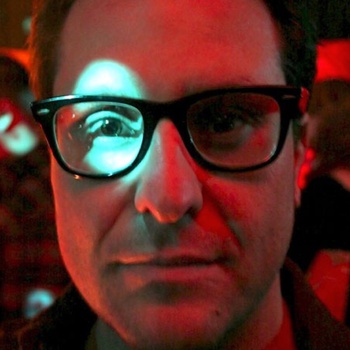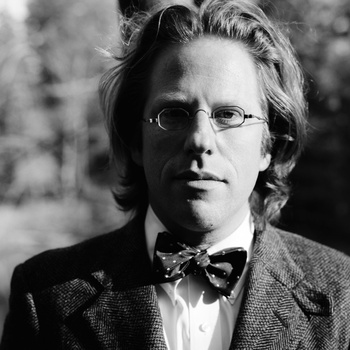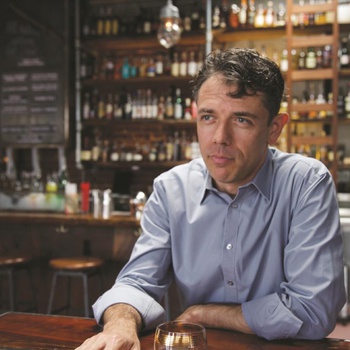Pace Layers Thinking
Stewart Brand, Paul Saffo

January 27, 02015
In 1999 “Pace Layers” made its debut in the book The Clock of Long Now by Stewart Brand. It appeared as a deceptively simple diagram with the caption: "The order of civilization. The fast layers innovate; the slow layers stabilize. The whole combines learning with continuity."
The six Pace Layer levels in descending order from the highest & fastest to the lowest & slowest are Fashion, Commerce, Infrastructure, Governance, Culture, Nature. Stewart’s initial point was to give insight into how a healthy society works. But fifteen years later, this idea about interacting layers that change at different speeds has been useful in ways he never expected.
Prominent designers and tech company executives have cited the Clock book and Pace Layers and told how it has changed their thinking. Many others have applied the idea to their work in design, management, engineering, and numerous other areas.
“This is a data free document,” Stewart quipped in response to an audience question about the Pace Layers illustration. That may reveal one reason for its longevity. Proposed initially as a way to view society, it has survived as a framework. It’s not tied to “facts” which may turn out to have expiration dates. Pace Layers travels well and ports easily to other systems.
"Quite a lot of people decided it was about software and systems and systems design," chuckled Stewart; he wasn't familiar with the term "full stack design" before learning that Pace Layers had been endorsed as a good metaphor for it.
Paul Saffo and a few others who use and teach Pace Layers spoke about what makes it a useful tool for analyzing our past, present and future. Paul, a founding Long Now board member and futurist, finds the concept invaluable for his own work, including teaching forecasting at Stanford.
Here’s how Stewart introduced the idea back in 1999:
I propose six significant levels of pace and size in the working structure of a robust and adaptable civilization. [...] In a healthy society each level is allowed to operate at its own pace, safely sustained by the slower levels below and kept invigorated by the livelier levels above.
Stewart has credited Freeman Dyson and Brian Eno, amongst others, for helping him form the concept. In this talk he went deeper into Pace Layers’ origins. "Like all good things this was stolen," he began, then paid tribute to architect Frank Duffy's concept of the nested “Shearing Layers” of a building. Stewart wrote about Duffy's work in his 1994 book How Buildings Learn: What Happens After They’re Built.
The presentation included an amazing artifact: a preliminary sketch of the Pace Layers diagram from December 1996, hand-drawn by Stewart after a talk with Brian Eno. That conversation helped finalize the idea: after Eno’s input he changed the top layer’s name to “Fashion” from “Art” and the layer labeled “Government” became “Governance.” If there are only six words, they have to be the right words.
Relationships between layers are key to the health of the system. More specifically, as both Stewart and Paul pointed out, conflicts caused by layers moving at different speeds actually keep things balanced and resilient. Paul called this “constructive turbulence.”
Innovation challenges orthodoxy. Wisdom repels destabilizing change, but also takes useful novelty onboard. Stewart, as much as anyone, has been an intellectual participant across some of our society’s most remarkable decades. As an agitator and as a bulwark. He has been the firebrand and now the grey beard. Pace Layers has proven itself low, slow, and here to stay. It’s fitting that the founder of the Whole Earth Catalog has given us access to a tool that’s so simple and enduringly useful.
Stewart Brand and Paul Saffo will discuss the Pace Layers framework for how a healthy society functions, which Stewart introduced in his book The Clock of Long Now (01999). More than fifteen years after its debut, this concept continues to be influential and inspiring. From January 02015.
The Pace Layers idea is illustrated by a simple diagram showing six layers which function simultaneously at different speeds within society. They range from Nature (the slowest) to Fashion (the fastest, shown at the top). As the layers progress, Stewart proposed, their differing speeds help make a society more adaptable. Cultures can be robust and healthy precisely because these layers come into conflict. Each level should be allowed to operate at its own pace, safely sustained by the slower levels below and kept invigorated by livelier levels above.
Though originally conceived as a tool for thinking about society, Pace Layers has had broad influence as experts in other disciplines have applied its framework to their areas including consulting and systems thinking. Jeff Veen of True Ventures (formerly Adobe, Adaptive Path, and Wired) recently said that Pace Layers provides a vocabulary to think about the stacked layers of contemporary design. Phil Libin, CEO of Evernote, has called the Pace Layers chapter in The Clock of the Long Now “the most profound thing I've ever read.”
Today in a networked world where everything seems to be about speed, awareness of the slower layers and perspective on how all layers interact can give insight into what the future may hold.
Upcoming Talks
Videos

Johanna Hoffman
Speculative Futures: Design Approaches to Foster Resilience and Co-create the Cities We Need
October 12, 02022

Creon Levit
Space Debris and The Kessler Syndrome: A Possible Future Trapped on Earth
April 26, 02022

Brittany Cox
Horological Heritage: Generating bird song, magic, and music through mechanism
August 20, 02019

Elizabeth Lonsdorf
Growing Up Ape: The Long-term Science of Studying Our Closest Living Relatives
April 30, 02019

James Holland Jones
The Science of Climate Fiction: Can Stories Lead to Social Action?
January 29, 02019

Kevin Kelly, Stewart Brand, Alexander Rose
Siberia: A Journey to the Mammoth Steppe
January 22, 02019

Caroline Winterer
The Art and Science of Deep Time:
Conceiving the Inconceivable in the 19th Century
September 4, 02018

Esther Dyson
The Short Now: What Addiction, Day Trading, and Most of Society’s Ills Have in Common
July 17, 02018

Hannu Rajaniemi
The Spirit Singularity: Science and the Afterlife at the Turn of the 20th Century
July 10, 02018

Shahzeen Attari
Facts, Feelings and Stories: How to Motivate Action on Climate Change
June 26, 02018

Renée DiResta
Disinformation Technology: How Online Propaganda Campaigns Are Influencing Us
April 10, 02018

Scott Kildall
Art Thinking + Technology: A Personal Journey of Expanding Space and Time
August 15, 02017

Miles Traer
The Geological Reveal: How the Rock Record Shows Our Relationship to the Natural World
June 27, 02017

Andrew Lakoff
How We Became “Unprepared”:
Imagining Catastrophe from the Cold War to Bird Flu
May 30, 02017

Jennifer Petersen
Why Freedom of Speech Is More Than Speech:
Expressions in Media and Code
April 18, 02017

Tara Behrend
The Psychology of Surveillance:
How Being Watched Changes Our Behavior
February 28, 02017

Ben Novak
The Next Flight of the Passenger Pigeon: Engineering Nature's Engineers
September 27, 02016









































































